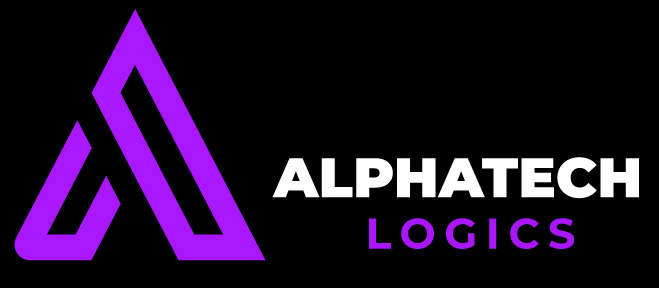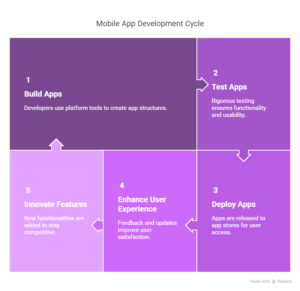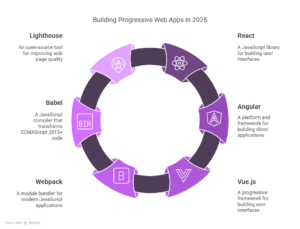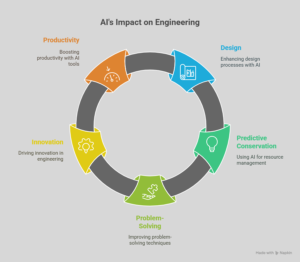Mobile App Development Platforms for Building Top-Notch Apps
In today’s digital-first world, mobile apps are more than just a trend — they’re a business essential. Whether you’re building a social platform, an eCommerce app, or a productivity tool, choosing the right development platform can make or break your success.
To help you get started (or switch to something better), here’s a breakdown of the top mobile app development platforms in 2025 that developers and companies are using to build high-quality, scalable apps.
1. Flutter (by Google)
Flutter has taken the cross-platform world by storm — and it’s not slowing down. It allows you to build iOS, Android, Web, and Desktop apps using a single codebase.
Key Features:
- Uses Dart programming language
- Hot reload for fast development
- Beautiful, customizable UI with Material and Cupertino widgets
- Native performance
Best For: Startups, MVPs, and teams wanting a consistent look across platforms.
2. React Native (by Meta)
React Native is a veteran in the cross-platform game. Built by Meta (Facebook), it allows developers to build native apps using JavaScript and React.
Key Features:
- Reusable components
- Access to native APIs
- Strong community and ecosystem
- Backed by a tech giant
Best For: Teams already using React for web, or companies needing quick cross-platform delivery.
3. Kotlin Multiplatform (by JetBrains)
If you love Kotlin, Kotlin Multi Platform lets you share code across Android, iOS, and more — while still keeping the ability to write platform-specific UIs.
Key Features:
- Shared business logic
- Native performance
- Full interoperability with Swift/Objective-C and Java
Best For: Teams building Android-first apps that want to expand to iOS without rewriting everything.
4. SwiftUI (iOS only)
If you’re building only for Apple devices, SwiftUI is Apple’s modern framework for building iOS, macOS, and watchOS apps with less code and more flexibility.
Key Features:
- Declarative syntax
- Real-time previews
- Seamless integration with all Apple platforms
Best For: Apple ecosystem apps with deep integration (like widgets, watch apps, etc.)
5. Xamarin / .NET MAUI (by Microsoft)
.NET MAUI (Multi-platform App UI) is the evolution of Xamarin and allows you to build apps for Android, iOS, macOS, and Windows from one codebase using C# and .NET.
Key Features:
- Shared UI and business logic
- Native API access
- Strong tooling with Visual Studio
Best For: Enterprises already using Microsoft technologies or building apps for multiple platforms including Windows.
6. Apache Cordova / Ionic
These platforms wrap web apps in a native shell, allowing you to build apps using HTML, CSS, and JavaScript.
- Cordova provides the native wrapper.
- Ionic offers a UI kit and ecosystem on top.
Key Features:
- Fast prototyping
- Huge plugin ecosystem
- Works with Angular, React, and Vue
Best For: Web developers moving into mobile or building hybrid apps.
7. Unity (for Mobile Games)
If your focus is mobile gaming, Unity is one of the best platforms out there. It’s used for everything from 2D casual games to complex 3D experiences.
Key Features:
- Powerful graphics engine
- Asset store for fast development
- Cross-platform deployment
Best For: Game developers or apps needing AR/VR features.
Choosing the Right Platform – Quick Tips:
| Need | Recommended Platform |
| Cross-platform business apps | Flutter, React Native |
| iOS-only apps | SwiftUI |
| Android-first with iOS expansion | Kotlin Multiplatform |
| Game development | Unity |
| Enterprise-grade, .NET ecosystem | .NET MAUI |
| Web-first teams | Ionic / Cordova |
Final Thoughts
There’s no one-size-fits-all platform. The “best” mobile app development platform depends on:
- Your target audience (Android, iOS, both?)
- Your team’s skill set
- App performance needs
- Time-to-market goals
- Long-term maintainability
Choose smart, build fast, and test often. With the right tools in your stack, creating top-notch mobile apps is more achievable than ever in 2025.





